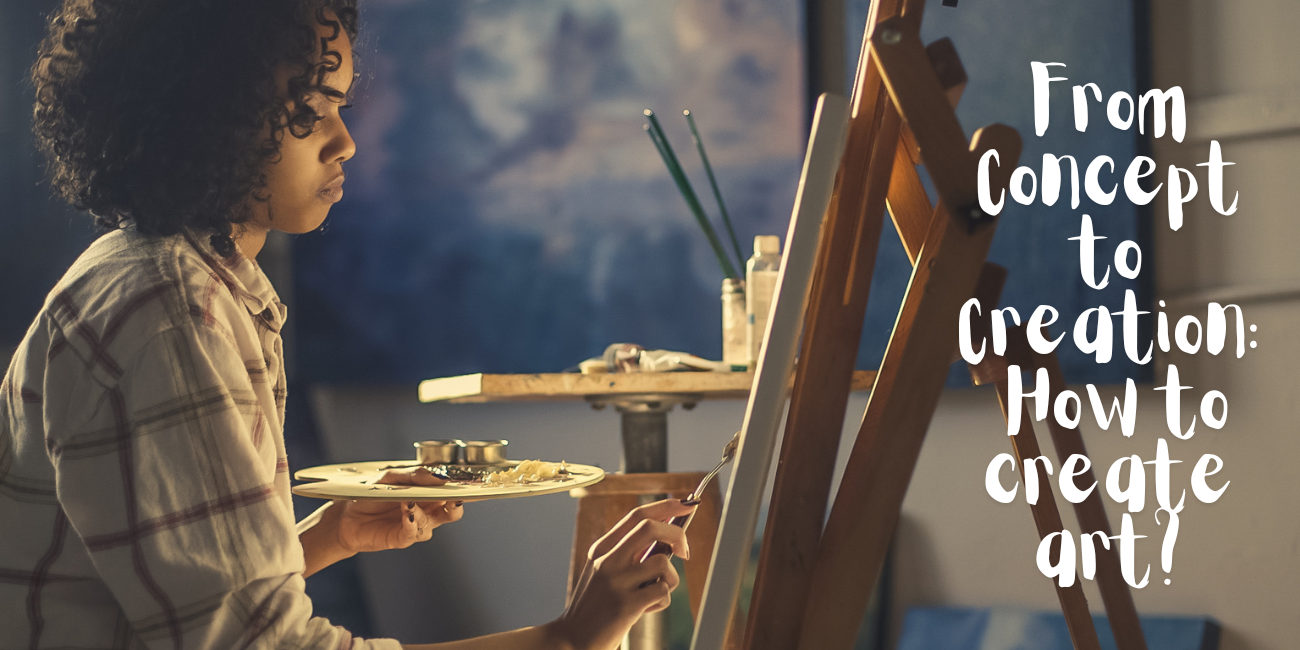
From Concept to Creation: How to create art?
Introduction
Every great piece of art starts with a spark of inspiration. For crafters, turning that initial idea into a tangible creation is a rewarding journey filled with creativity, experimentation, and skill. Whether you're an experienced artisan or a novice maker, bringing your crafting ideas to life can be an exciting and fulfilling process. In this blog, we’ll guide you through the steps to transform your creative concepts into beautiful finished products.
Step 1: Finding Inspiration
The first step in any crafting project is finding inspiration. Inspiration can come from anywhere—nature, architecture, fashion, or even everyday objects. Here are some ways to spark your creativity:
1. Explore Online Platforms:
Websites like Pinterest, Instagram, and Etsy are treasure troves of creative ideas. Follow crafters and artists whose work you admire to see what inspires them.
2. Visit Art Shows and Craft Fairs:
Local art shows, craft fairs, and galleries can provide a wealth of inspiration. Observe different styles, techniques, and materials that other artists use.
3. Keep a Sketchbook:
Carry a sketchbook with you to jot down ideas, doodles, and sketches whenever inspiration strikes. This practice helps to capture fleeting ideas and develop them later.
Step 2: Planning Your Project
Once you have an idea, the next step is to plan your project. Good planning can make the creation process smoother and more enjoyable.
1. Define Your Vision:
Clearly define what you want to create. Consider the purpose, size, colors, and style of your project. Creating a mood board with images and materials that align with your vision can be helpful.
2. Gather Materials:
Make a list of all the materials you’ll need for your project. This may include fabric, yarn, paint, tools, and any other supplies specific to your craft. Having everything on hand before you start will save time and frustration.
3. Create a Timeline:
Estimate how long each step of your project will take and create a timeline. Setting realistic deadlines for yourself can keep you on track and motivated.
Step 3: Developing Skills and Techniques
To bring your idea to life, you may need to learn or refine certain skills and techniques. Here’s how to do it:
1. Take Classes:
Look for workshops or online classes that focus on the skills you need. Websites like Skillshare, Udemy, and YouTube offer tutorials on a wide range of crafts.
2. Practice:
Dedicate time to practice new techniques. The more you practice, the more confident and proficient you’ll become.
3. Join Crafting Communities:
Engage with other crafters through online forums, social media groups, or local clubs. Sharing knowledge and experiences can help you learn and grow.
Step 4: Creating Your Craft
With a plan in place and skills honed, it’s time to start crafting. Here are some tips to keep you on track:
1. Set Up Your Workspace:
Create a dedicated space for your project. Ensure you have good lighting, organized materials, and a comfortable work area.
2. Break It Down:
Divide your project into manageable steps. Tackling one step at a time makes the process less overwhelming and allows you to focus on details.
3. Stay Flexible:
Be open to changes and adjustments as you work. Sometimes, the project may evolve in unexpected ways. Embrace these changes as part of the creative process.
Step 5: Finishing Touches
Once your project is complete, take time to add the finishing touches that will make it truly special.
1. Quality Check:
Inspect your work for any flaws or areas that need improvement. Make necessary adjustments to ensure your project meets your standards.
2. Personalize:
Add personal touches, such as a signature, date, or custom embellishments, to make your project uniquely yours.
3. Presentation:
Consider how you’ll display or present your finished piece. Whether it’s framing a piece of embroidery, packaging handmade jewelry, or setting up a decorative display, presentation matters.
Step 6: Sharing Your Creation
Sharing your finished work can be incredibly rewarding and can inspire others.
1. Photograph Your Work:
Take high-quality photos of your finished project. Good lighting and clear images can highlight your craftsmanship and creativity.
2. Share on Social Media:
Post your project on social media platforms, crafting forums, and online galleries. Use hashtags and engage with the crafting community to reach a wider audience.
3. Enter Competitions:
Consider entering your work in local or online craft competitions. Recognition and feedback from judges can be valuable and motivating.
Conclusion
Turning your crafting ideas into reality is a journey that involves inspiration, planning, skill development, and creativity. By following these steps, you can transform your concepts into beautiful, tangible creations. Embrace the process, enjoy each step, and take pride in your handmade masterpieces. Remember, every great craft project begins with an idea—so let your creativity flow and start crafting!
For any inquiries or assistance, contact us at contact@wainsy.com.
Stay updated and connected with Wainsy on social media:
Facebook: Follow us on Facebook
Instagram: Follow us on Instagram
YouTube: Subscribe to our YouTube channel
LinkedIn: Connect with us on LinkedIn
Blog by
ⓒWainsy